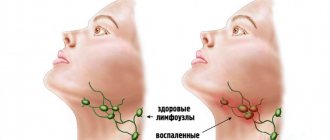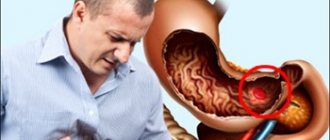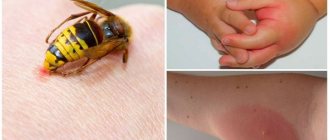Make an appointment by phone: +7 (343) 355-56-57
+7
- About the disease
- Cost of services
- Sign up
- About the disease
- Prices
- Sign up
A child’s temperature is a protective reaction that helps fight the disease. But it does not determine the cause of the disease and rarely helps to make an accurate diagnosis. However, understanding where this symptom comes from will help parents and doctors properly help a child of any age.
How to measure temperature correctly
Before giving your daughter or son any medicine, you should make sure that the temperature has actually risen.
Thermometers help measure it, so they should be in your home medicine cabinet. The following methods can be used:
- 1. Use a regular glass mercury thermometer. And although this method is considered not fashionable today, it shows the most accurate numbers.
- 2. An ear thermometer is a good device for very young children, since you can get the result in just a few seconds, and no contact with the skin is required.
- 3. Digital ones are not as accurate as classic ones, but they are especially popular with parents of all ages.
- 4. Frontal ones are most often found in large clinics. This is very rare in home practice.
- 5. Thermometer - the pacifier will be an ideal assistant for mothers and fathers if the child is not yet a year old.
Each of the presented options works differently. Therefore, before you start using it, you should read the instructions.
Intestinal flu in children
One-year-old Olezhka was hospitalized with swine flu. The temperature rose for the fifth day, plus a painful cough, and then a clinical blood test revealed severe leukopenia - 2 thousand leukocytes per microliter. The parents got scared and decided to hospitalize the child out of harm’s way.
In the hospital I felt better within a day. The blood test was repeated - leukocytes rose to 4 thousand. The department doctor also offered to stay for a day - like not all the tests had come yet - but it was clear that he was just trying to get a bed-day for reporting.
And suddenly - a new attack. On the morning of discharge, Olezhka suddenly began to vomit uncontrollably. “I told you, don’t steal food from home,” the department doctor grumbled... But the doctor was slightly disingenuous. In the next box, a girl with pneumonia also began vomiting and diarrhea. After a couple more boxes, the stomach of a patient’s mother was very upset. So homemade food clearly had nothing to do with it.
Olezhka was put on a drip, the vomiting subsided, but in the evening his temperature rose to 39. By morning, watery yellow diarrhea poured out of him. Olezhka’s grandmother called me almost crying: “We don’t know what to do now! He only got worse in the hospital. He lies all lethargic and does not get out of bed. Doesn't eat anything. Maybe we should go to another hospital?”
“In fact,” I answer, “he’s no worse off.” This is just a new disease - no less dangerous than the previous one. Most likely, the boy simply picked up another flu after his swine flu - intestinal. This often occurs in hospitals, and you are probably not to blame for anything. Most likely, the nurse, leaving the room with an intestinal infection, forgot to wash her hands and came in to see you. And since they gave you this diarrhea, let them treat you themselves. It’s okay, they’ll give Olezhka another day and he’ll come to his senses.”
Know the enemy by sight
Of course, there is no “intestinal flu” in the literal sense of the word. This is the common name for acute gastroenteritis, a viral intestinal infection. Gastroenteritis is most often caused by rotavirus. This infection is transmitted through dirty hands along the chain. The incubation period is 1–3 days.
Therefore, if something happens, we carefully collect anamnesis: for example, on Saturday the father had a stomach ache, on Monday the mother vomited, and on Thursday a one-year-old child had a temperature of 39, which ultimately lasted for three days, and there was frequent vomiting and diarrhea. Well, it looks like rotavirus.
How to fight
There are no etiotropic drugs for rotavirus. Yes, they are not needed; the virus itself will disappear from the body in a few days (weeks). The main danger of rotavirus infection is the development of dehydration. It is the cause of hospitalization and even death.
Reasons for the increase
A child does not develop a high temperature without a reason.
However, it is very difficult for parents to find the cause at home. It is for this reason that it is advisable to show the baby to the pediatrician. The most common reasons are:
- 1. Colds and viral diseases.
- 2. Intestinal infections.
- 3. Inflammatory diseases of internal organs.
- 4. Pneumonia and other lung diseases.
- 5. Inflammation of the ears, especially otitis media.
- 6. Sore throat.
At the same time, parents need to understand what a normal temperature value is. The average human body temperature remains at 36.6 – 36.9 degrees. Anything below this figure is called hypothermia. Anything higher is hyperthermia. This indicator is also classified according to another scale, which is often used by doctors.
Low-grade fever is in the range of 37 – 37.9. This is followed by febrile, which starts from 38 and ends at 38.9. If there are higher numbers on the thermometer, then it is already paretic, and above 41 degrees is called hyperpyretic.
What to do if a child has a temperature of 38°C?
If the thermometer showed such a figure, then there is no need to panic. Doctors consider it to be moderately elevated, and in most cases it is safe. However, the problem should not be overlooked.
Pediatricians call this condition fever. This is one of the signals that the child is sick. Usually this temperature does not last long - a couple of days at most. To bring your baby back to normal, it is recommended to surround him with the necessary care and attention.
Children under six months of age with a temperature of 38ºC or higher should seek immediate medical attention. You should not give your baby antipyretics until examined by a pediatrician.
Actions that will help your child get back to normal faster:
- Provide plenty of fluids. It is important that the temperature of the liquid matches body temperature;
- Do not give your child liquids that he has not drunk before. This is done so as not to cause allergies;
- Don't force your baby to eat. If he refuses to eat, then it is better to listen to him and abstain;
- There is no need to force your child to lie in bed. Let him spend this period where he is comfortable;
- Measure body temperature every 2 hours. If growth is observed, then you need to call an ambulance.
We can say that fever also has positive properties. It helps to activate the body's defenses, accelerates metabolic processes, stimulates energy production to fight infection and restore tissues damaged as a result of the disease.
Is immunity really developed?
There is no consensus on this matter.
It is believed that high temperature is the body’s response to the penetration of viruses, microbes, and bacteria into it. And the pyretic mechanism, which turns on at this moment, helps to literally “fry” all these harmful strangers. When are antipyretic medications needed? Many pediatricians advise parents to do the following - if the baby has a fever, and he tolerates it quite well, continues to do his work, plays and does not experience weakness - then antipyretics should not be given up to the maximum limit of 38.5 degrees.
If the baby is literally lying flat, and in previous cases of hyperthermia he had convulsions or vomiting, then the medicine must be given, and not wait for the number 38.5 on the thermometer.
How to care for a sick child at home
For a child with a fever, it is important to create a comfortable environment at home. You should not dress him warmly or wrap him up (except during periods of severe chills); he should be ventilated: the temperature in the room should be 20–22°C.
An ill child becomes lethargic or restless and refuses to eat or drink, which can lead to dehydration with a fever. Therefore, it is important to give your baby water as often as possible. To do this, it is better to use warm or cool compotes, fruit drinks, diluted juices, jelly, and weak tea. Children under two years old should drink about 1 liter of liquid per day, older children - 1.5–2 liters. If your baby is breastfed, you need to put him to the breast more often.
At high temperatures, it is important to maintain a drinking regime. Photo: lia_russy / Depositphotos
An indicator of adequate drinking is passing light-colored urine every 4 hours. It is necessary to monitor the child so as not to miss important symptoms and consult a doctor in a timely manner. Walking and washing a feverish baby should not be done in cases where it makes the child feel uncomfortable.
Maximum allowed values
Today there is no exact understanding of what temperature is dangerous for a child.
It all depends on how the baby feels. However, if numbers above 38.5 appear on the thermometer, then you should definitely give medicine. An ambulance should be called when the numbers are 39 and above. If a child’s temperature does not go down after taking antipyretics, then what to do? You should definitely call a doctor at home or go to the clinic to determine the exact cause of this condition, which is incomprehensible to parents.
ARVI
ARVI is a viral infection affecting the upper respiratory tract. This is the most common cause of fever. ARVI is accompanied by a runny nose, nasal congestion, possible sore throat, change in voice, and cough. Modern international guidelines for doctors call ARVI a “self-limiting disease” and advise only to ease the child’s well-being and monitor the emergence of possible complications. Frequent complications of respiratory viral infections in children under 1.5 years of age are otitis media (inflammation of the middle ear) and laryngitis. Signs of laryngitis - hoarseness, barking cough - often occur at night and in the early morning. When they appear, you must definitely call an ambulance if the attack did not stop after inhalation with saline solution or Borjomi.
How to reduce a child’s temperature with medications - tablets, syrups
Today one of the most popular drugs is Nurofen.
It is available in the form of syrup, capsules and rectal suppositories. For each age, you can choose your own option to safely and painlessly give medicine to your baby. Paracetamol, which can be found in the pharmacy in the form of tablets or syrup, has a good effect.
Some parents use ibuprofen, which is recommended for acute inflammatory diseases, teething and other pathological conditions, starting from 6 months.
What does low-grade fever mean?
Subfebrile is considered to be 37.1 - 38.0 °C. With these values, the baby can feel good. Hyperthermia develops against the background of acute and chronic pathologies listed above, or is normal for a small person. It is necessary to exclude life-threatening diseases listed above. You may need to consult an immunologist, otolaryngologist, endocrinologist, neurologist, or orthopedist to sort out the situation.
Conclusion
Many of the diseases we talked about can be the result of reduced immunity. Methods such as hardening (pouring the legs with cold water), healthy sleep, a varied diet (mandatory presence of fruits, vegetables, vegetable and animal fats, meat in the diet), sufficient walks in the fresh air will help increase resistance to diseases. Take vitamins. Get vaccinated according to the calendar: they will protect the baby from infectious diseases.
Don't forget that t weakens the body. Therefore, monitor the baby’s health and follow the doctor’s recommendations for treatment. Do not write off all cases of hyperthermia as “teeth”: first rule out pathology.
Oncological pathology
A child’s fever almost always means that some negative processes are occurring in his body. Therefore, there is no need to rush to shoot him down. The specialist must clearly understand what is happening to the baby.
Unfortunately, it is malignant neoplasms in children that develop according to this scenario. Therefore, when a fever appears, parents need to make sure that there are no symptoms such as:
- Lack of appetite;
- severe exhaustion;
- constant drowsiness;
- weakness;
- tendency to bleed;
- bruises on the legs;
- pallor.
It is difficult for a child to talk about his feelings. However, you should be wary when he seems lethargic, has no interest in games, and does not want to communicate with his parents or peers.
Therefore, if a child without symptoms has a temperature of 39.5, this is a reason to urgently undergo a full examination of the body. The specialist must make sure what we are talking about: a serious illness, a failure of thermoregulation or other factors.
It should be borne in mind that the immune system of a small patient is very weak and when faced with foreign elements for the first time, it reacts very sharply.
Therefore, a child may develop a fever due to nervous strain, long travel, overheating in the sun, or being in a room that is too hot. The child’s body is able to respond to any adversity.
Is a temperature of 39.2 °C dangerous?
Fever with an increase in body temperature to 39.2 °C and above is considered a condition requiring emergency care1,2,3. With such hyperthermia (elevated temperature), the body's adaptive capabilities are disrupted and fever ceases to play a protective role, acting as a damaging factor. Against the background of high temperature, the functioning of most systems is disrupted: nervous, respiratory, cardiovascular, which can lead to various complications.
Among the most common complications of hyperthermia are:
- convulsive syndrome,
- fainting and collapse,
- acute cardiovascular failure,
- dehydration1,2.
At a temperature of 39.2 °C, patients experience a number of unpleasant sensations:
- severe headache;
- pain in the eyes, photophobia;
- tinnitus and increased sensitivity to loud sounds;
- lethargy and weakness;
- nausea;
- muscle and joint pain3.
Up to contents










